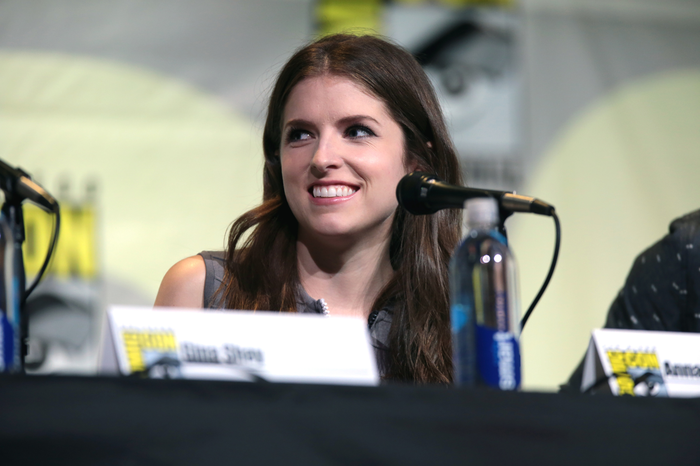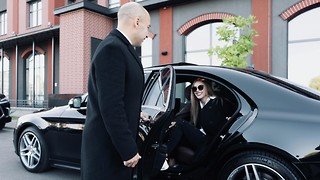Head to Head: Woman of the Hour
Jaipreet Lully and Stella Williamson go head to head over Anna Kendrick’s latest TV show, Woman of the Hour

Anna Kendrick’s directorial debut Woman of the Hour (2024) is a brutally bold departure from the actor’s vast and beloved repertoire (Pitch Perfect , A Simple Favor, Trolls). Based on a true story, Kendrick plays aspiring actress Sheryl Bradshaw who, appearing as a contestant on the 70s TV show The Dating Game, unknowingly meets and wins a date with serial killer Rodney Alcala (Daniel Zovatto). The film uses parallel storylines by interspersing Sheryl’s stint on The Dating Show with flashbacks to Alcala’s assault and murder of various women and his resultant arrest in 1979. Despite overwhelmingly positive critical reviews, lauding both the film’s direction, performances and screenplay, Woman of the Hour has not been without its controversies.
“Kendrick refreshingly focuses on the horror of the male gaze itself, rather than pandering to Hollywood tastes for violence”
JL: The consensus of critics is that the film is “a touch too glossy to feel genuine”. In other words, there is no real moral message to the narrative, especially with its bittersweet ending. In their minds, the film depicts a tiresome binary seen many times over — the abuser has always been evil, and his female victims always suffer.
SW: Some viewers find Alcala’s intermittent backstory to be incohesive and distracting from The Dating Game scenes with Sheryl. Personally, these scenes seem crucial to comprehend fully the scope of Alcala’s evil. Their main aim is to hint at the potential threat that Sheryl could be faced with, ramping up the tension we feel as we watch this story unfold. For most women, it’s already a nightmare to be alone at night with a strange man, but witnessing Alcala’s previous crimes creates an effective and terrifying dramatic irony that comes to fruition during the confrontation in the car park scene. This non-linear storytelling plays with temporality, allowing for an interesting analysis of how everyday sexism can so easily descend into extreme violence against women.
“it is already enough that the viewer witnesses Alcala previously murdering three women without consequence”
JL: The film certainly raises the important debate of how women’s violence should be depicted in the media. After all, the stylistic choices in Woman of the Hour are subtle, but powerful. I am immediately reminded of the close up shots featuring 15-year-old Amy’s tightly bound wrists and traumatised eyes, juxtaposed later by Alcala scrubbing his bloodied hands. I found that these scenes detailing the aftermath of Alcala’s brutality leave viewers with potent feelings of anger and disgust, without the need for graphic, gratuitous scenes of the assaults themselves. While some viewers find that the omission of such explicit violence only feeds into the idea that Alcala’s backstory is ‘filler’, I find that too often true crime adaptations become exploitative when they include violence for ‘shock value’. Instead Kendrick refreshingly focuses on the horror of the male gaze itself, rather than pandering to Hollywood tastes for violence.
SW: The film certainly does not seem to try to appeal to any sort of Hollywood or mass market, with Kendrick using decidedly more indie stylistic choices; shots are long and music is rarely used. It is the introduction of Nicolette Robinson’s character Laura, a The Dating Game audience member who recognises Alcala as the man who murdered her friend Alison, that threatens to teeter the film into unrealistic Hollywood tropes with this seemingly too coincidental meeting of players. Rather than bolstering Woman of the Hour’s greater social critique, Laura’s plotline seems redundant in its exposition of police negligence — it is already enough that the viewer witnesses Alcala previously murdering three women without consequence.
“it is worth noting that the film’s time period could have been better honoured and established”
JL: I agree — but surely the film’s closing credits detailing Alcala’s close encounters with the police after a decade of dismissed reports from women is enough to spark outrage at a failing system? The credits inform the viewer that whilst on bail, Alcala murdered a 21-year-old woman and a 12-year-old girl.
SW: Another weakness of the film could be Kendrick’s world building, with some locations and stylistic choices seeming incongruent to the 70s setting. On Pete Holmes’ podcast You Made It Weird with Pete Holmes (Holmes actually stars in the film as Sheryl’s intrusive neighbour Terry), Kendrick discusses disagreeing with producers who wanted the film to open in a nightclub, with tracking shots of bell-bottoms and disco balls to establish the film’s timeline. While Kendrick’s chosen opening undoubtedly sets the film’s chilling and brutal tone, perhaps it is worth noting that the film’s time period could have been better honoured and established.
“these anachronisms serve another purpose; although they don’t fit with the 70s culture, I think that they serve as moments of self-identification”
JL: There are definitely some scenes which feel quite unrealistic, and very 21st century — especially when Sheryl hints for the waitress to close up the bar to escape her date with Alcala. My mind immediately thought of the ‘Ask for Angela’ scheme in clubs and bars, which has only become prevalent in dating culture recently, and so felt quite out of place here. But maybe these anachronisms serve another purpose; although they don’t fit with the 70s culture, I think that they serve as moments of self-identification for the modern audience with Kendrick’s character. They remind us that, whether a woman is dating in the 70s or in the 21st century, we all face similar fears in the face of the male gaze. It highlights also, rather tragically, just how much has changed since the 70s.
Woman of the Hour not only begs the question “Which one of you will hurt me?” but how will you hurt me? It’s not just a film about a serial killer, but a bleak, cynical exploration of the scope of unchecked violence against women in the 70s, from everyday sexism to the most extreme cases of misogynistic violence. Certainly an impressive debut from Kendrick, the 95 minute film reinterprets the buried history of 70s American dating culture.
 News / Uni offers students £55k in payouts31 October 2025
News / Uni offers students £55k in payouts31 October 2025 News / Uni error forces deeper spending cuts31 October 2025
News / Uni error forces deeper spending cuts31 October 2025 News / Students allowed to use AI, says new uni guidance31 October 2025
News / Students allowed to use AI, says new uni guidance31 October 2025 News / Students launch women’s society excluding trans women31 October 2025
News / Students launch women’s society excluding trans women31 October 2025 News / College rowing captains narrowly vote to exclude trans women31 October 2025
News / College rowing captains narrowly vote to exclude trans women31 October 2025










